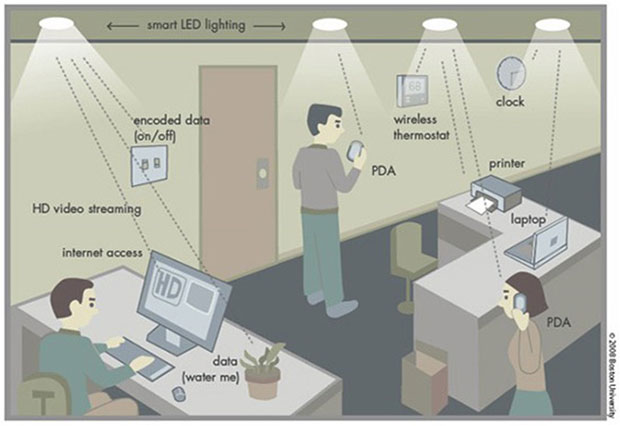-
Tips for becoming a good boxer - November 6, 2020
-
7 expert tips for making your hens night a memorable one - November 6, 2020
-
5 reasons to host your Christmas party on a cruise boat - November 6, 2020
-
What to do when you’re charged with a crime - November 6, 2020
-
Should you get one or multiple dogs? Here’s all you need to know - November 3, 2020
-
A Guide: How to Build Your Very Own Magic Mirror - February 14, 2019
-
Our Top Inspirational Baseball Stars - November 24, 2018
-
Five Tech Tools That Will Help You Turn Your Blog into a Business - November 24, 2018
-
How to Indulge on Vacation without Expanding Your Waist - November 9, 2018
-
5 Strategies for Businesses to Appeal to Today’s Increasingly Mobile-Crazed Customers - November 9, 2018
Li-Fi was tested outside of the lab and it works
The technology uses Visible Light Communication (VLC), which itself uses visible light between 400 and 800 terahertz (THz).
Advertisement
A new wireless technology known as Li-Fi has been tested in a real world setting and is 100 times faster than Wi-Fi. The unfortunate part in all of this is that Li-Fi will have some work to do before it replaces Wi-Fi. Although this was still in the testing phases not long ago it’s already set to reach the public. “We only had to keep your micro-control board in front of the laptop screen (GUI) and the data was transferred wirelessly using visible light communication”, researchers said in their report. That’s a promising start for the technology that managed speeds of 224 gigabits per second in the lab. For reference, at that speed you’d be able to download 18 movies of 1.5GB each every second. Outside of the lab, scientists reported speeds of 1 GB per second, which is a lot less than in the lab, but still represents speeds that are 100 times speedier than the average Wi-Fi delivery.
Harald Haas from the University of Edinburgh, Scotland invented Li-Fi in 2011. He used flickering lights from a single LED which transmits more data than cellular towers.
Now, Li-Fi has been tested out in Tallinn, Estonia, in offices and industrial environments by tech company Velmenni.
‘Currently we have designed a smart lighting solution for an industrial environment where the data communications is done through light.
While our homes, offices, and cities have generally been fitted for Wi-Fi, so Li-Fi probably won’t replace it in the immediate future, it could replace it in the relatively short term (remember when we all used cable modems for the internet?).
Given light can not pass through walls, li-fi also has the potential to provide low-priced wireless internet more securely than current wi-fi offerings. This also means that there is less interference between devices.
Published in scientific journal Photonics Technology Letter, the researchers wrote that the Wi-Fi alternative could offer connections at order of magnitudes faster than current internet speeds.
Advertisement
Not only is Li-Fi faster, which is really all anyone could ask for, it’s more secure. One of the new technology that has been in the works for years is the Li-Fi, a new wireless technology that is capable of transferring high-speed data via visible light communication. In his 2011 Ted Talk, Haas envisioned a future in which the internet is available to every person with a light bulb. And French tech company Oledcomm is in the process of installing its own Li-Fi technology in local hospitals.




























